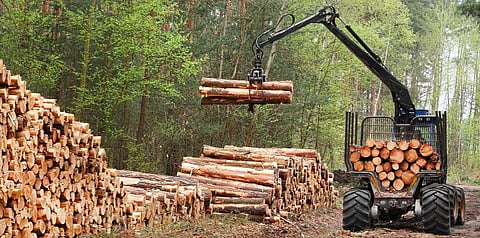Indigenous lands have less deforestation than state-managed protected areas in most of tropics
The world lost more than 12 million hectares of tropical forest in 2020, an area about half the size of the UK. Tropical forests contain much of the world’s animal and plant species and store more than half of its terrestrial carbon. Just as importantly, they are home to people who depend on them for their livelihoods, spiritual and cultural practices and wellbeing.
The United Nations Convention on Biological Diversity’s Aichi targets set goals for each country to create protected areas in 2010, and roughly 15 per cent of the world’s land surface is under official state protection. Protected areas have largely been able to reduce deforestation. But their creation can also mean the eviction of communities which have lived in forests for generations, barring them from resources and sacred sites. These injustices have often been made possible by human rights abuses, including violent intimidation and even killings by state forces and other groups.
Areas managed by Indigenous peoples cover more than 25 per cent of the world’s land and overlap with 40 per cent of protected areas globally. Studies in Nicaragua and Brazil have found that Indigenous communities with ownership of their land have lower rates of deforestation than neighbouring areas. Often, deforestation in these places is even lower than in protected areas.
This is usually because Indigenous peoples have developed practices and institutions that prevent the over-exploitation of forests. The Cofán community in Zábalo in the Ecuadorian Amazon, for example, see themselves as tsampima coirasundeccu (caretakers of the forest). They share their daily observations at community meetings and arrive at a consensus over whether to prohibit harvesting certain plants and animals if they are declining.
In a recent study, myself and fellow researchers compared tropical deforestation rates and found that less deforestation occurs on Indigenous lands than in non-protected areas across the tropics. And with the exception of the Americas, where recent government policies have sped up the encroachment of extractive industries, Indigenous lands had similar or even lower rates of deforestation than protected areas.
Indigenous lands and deforestation
We used maps to classify areas of tropical forest that were under state-managed protection, on Indigenous lands, both, or remain unprotected in Africa, central and South America and the Asia-Pacific region. We chose areas with similar characteristics — including elevation, distance from cities and density of people — and applied a model to estimate deforestation rates. This allowed us to compare areas at similar levels of risk of deforestation.
Deforestation rates on Indigenous lands were between 17 per cent and 26 per cent lower on average compared to unprotected tropical forests globally. In Africa, Indigenous lands preserved forest cover better than protected areas, which had similar levels of deforestation to unprotected areas. In the Asia-Pacific region, spanning from India to Fiji, deforestation rates were similar on Indigenous lands and in protected areas. Both had deforestation rates that were roughly one-fifth lower than unprotected areas.
In the Americas, deforestation was 17 per cent lower on average in Indigenous lands compared to unprotected areas. However, protected areas had 28 per cent less deforestation than those without any form of protection. This is fairly surprising, as a lot of earlier research (in Brazil, Panama and Peru) found that Indigenous territories perform better in protecting forests than state-managed protected areas.
We couldn’t examine this further in our research, but we think it might be an effect of more recent government regulations. In Brazil for instance, the president, Jair Bolsonaro, has encouraged extractive industries such as mining on Indigenous land.
Forest degradation
We also examined rates of forest degradation in the tropics. This is when some but not all tree cover is lost due to selective logging, road building or invasive species. Although forest degradation receives less attention than deforestation, it can still generate carbon emissions and deprive endangered species of habitat.
We looked at where tree cover was lost but subsequently recovered and found that forest degradation was between 9 per cent and 18 per cent lower on average on Indigenous lands compared with unprotected areas globally.
Our research bolsters the status of Indigenous communities as effective stewards of the land. This is particularly important as countries prepare for the 15th UN biodiversity conference in April 2022, where they’ll set fresh targets for halting species and habitat loss and agree on a new global framework for protecting nature.
Indigenous communities and their leaders must be at the negotiating table when the world meets to develop this roadmap. Growing evidence shows Indigenous peoples benefit the environment through their stewardship. Conservationists should support that by respecting their rights to land and autonomy and providing adequate funding.
Jocelyne Sze, PhD Candidate in Conservation and Biodiversity, University of Sheffield
This article is republished from The Conversation under a Creative Commons license. Read the original article.

